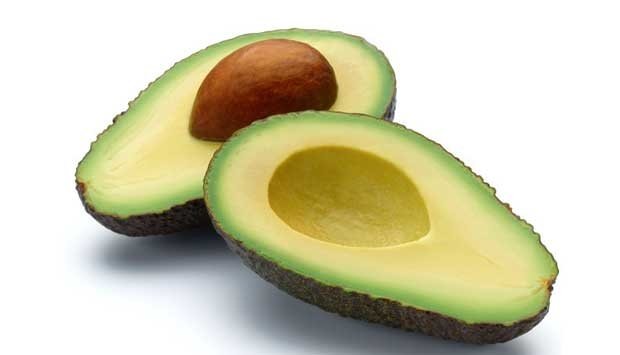
Hello steemean...!!!..
Today I will to share my science about the extraction process of oil from Avocado seed
Vegetable oil is a vegetable oil that can be used as an alternative fuel that is environmentally friendly. In this study the raw materials used in the process of making biodiesel raw materials are avocado seeds which are produced through a solid-liquid extraction process, using n-hexane as a solvent. The purpose of this research is to find the optimum condition of Avocado Oil Extraction Process. By using (Software Design Expert V.6.0.8) method of Response Surface Methodology (RSM). Avocado seeds of 50 grams, using n-hexane solvent extracted with a fixed temperature of 55oC with seed ratio: the solvent was 1: 6,1: 7 and 1: 8 with extraction time of 60 minutes, 120 minutes and 180 minutes. Based on the experimental result, the highest yield was 6,96% at 180 minute extraction time with 55oC fixed temperature and on the weight ratio of 1: 7, while Experiment Design gave prediction to get the optimum point that is at the time of extraction time 120 minutes with the seed weight ratio with solvent 1: 7,28 and oil yield equal to 2,362%.
Background
Human needs will increase so that the supply of energy, especially energy that can not be renewed will decrease even over time will run out. Currently, nearly 80% of the world's energy needs are met by fossil fuels. In fact, the use of fossil fossil materials could lead to global warming.
To reduce dependence on fossil fuels as an energy source it is necessary to search for sources of energy that can be used as an alternative fuel that is environmentally friendly and easy to obtain to replace the use of fossil fuels as an energy source.
Biodiesel can also be used as motor vehicle fuel. Biodiesel is a product derived from vegetable oil. Biodiesel is known as a renewable resource because it can generally be extracted from various agricultural products and plantations. Raw materials potentially as raw material for biodiesel producers include palm oil, soybean, jatropha curcas, avocados, and several other plant species
Research Methodology
Tools
- Beaker Glass
- Three-neck flask
- The glass funnel
- Filter paper
- Pipette drops
- Hot plate
- Magnetic stirrer
- Analyzer
- Condenser
- Thermometer
- Analytical balance sheet
- Set Distillation
- Propeller stirrer
Materials
- Avocado seeds
- N-hexane
Research Variables
The research variables used in this study are fixed variable, independent variable and dependent variable. Explanation of the above three variables can be described in the sub sections below:
Fixed Variables
- Avocado seed weight: 50 grams
- Type of solvent: N-hexane
- Temperature Extraction: 55 ºC
- Stirring speed: 300 rpm

Free Variable
Variabel bebas yang digunakan pada penelitian ini adalah perbandingan berat biji dengan pelarut dan waktu ekstraksi. Pada penelitian ini menggunakan metode RSM untuk menentukan batasan level masing-masing variabel, serta rancangan penelitian. Metode ini dilakukan dengan menggunakan software Design Expert 6.0.8.

Research Procedure
The stages in conducting this research include the preparation of raw materials, research stages, analysis phase which will be described in the sub chapters below:
Raw Material Preparation
The seeds of an old avocado are cleaned and dried, after which they are crushed with a size of ± 1 mm s / d ± 3 mm.
Research Stages
Seeds that have been mashed and dried, weighed as much as 50 grams and put into a three-neck flask (reactor). Furthermore, 300 ml of n-hexane solvent is introduced into the three-neck flask. The mixture is heated to a temperature of 55 ºC for a predetermined time. and the mixture was homogenized with a 300 rpm stirring rate.
The method used to design this experiment is the RSM (Response Surface Methodology) Method. RSM is a combination of mathematical and statistical techniques useful for modeling and problem analysis in which the observed response is influenced by several variables and aims to optimize the results of this study.

Scheme of Work Procedure of Optimization of Avocado Oil Extraction Process (Persea Americana With Response Surface Methodology.
Phase Outcome Analysis
The oil obtained is taken for analysis of the viscosity, density, yield and composition of the hydrocarbon compound.
Density Analysis
- Weighed the weight of the empty pycnometer first.
- Then the ethyl ester is fed into the pycnometer and weighed.
density calculation:
Density = ((weight piknometer + sample) - pixnometer weight empty) / (picnometer volume)
Yield Analysis
yield calculation:
Yield (%) = (mass of oil) / (raw material mass) x 100%
Gas Chromatography Mass Spectofotmetry Analysis
A series of solutions is made. Then with the same volume, each solution is injected to the injection site of the substance in the GC. Draw a calibration line and a chromatogram, with a verta of substance on the horizontal axis, and wait for the top of the curve or brush of the curve peak area on the vertical axis.
The solution of the substance is prepared according to the one shown in each monograph. The chromatogram obtained under the same conditions as how to obtain a calibration line, the area of the peak of the curve or the height of the curve peak is measured. After that, calculated the amount of substance by using the calibration line. In this way of working, all must be done with a fixed condition.
Image Tool

Process of Destruction of Raw Materials
Reactor Batch
extraction process
Process of Separation
Analysis Cromatografi Gas-Spektrometri Massa
Products (Avocado Oil)

here.Congratulations, you were selected for a random upvote! Follow @resteemy and upvote this post to increase your chance of being upvoted again! Read more about @resteemy